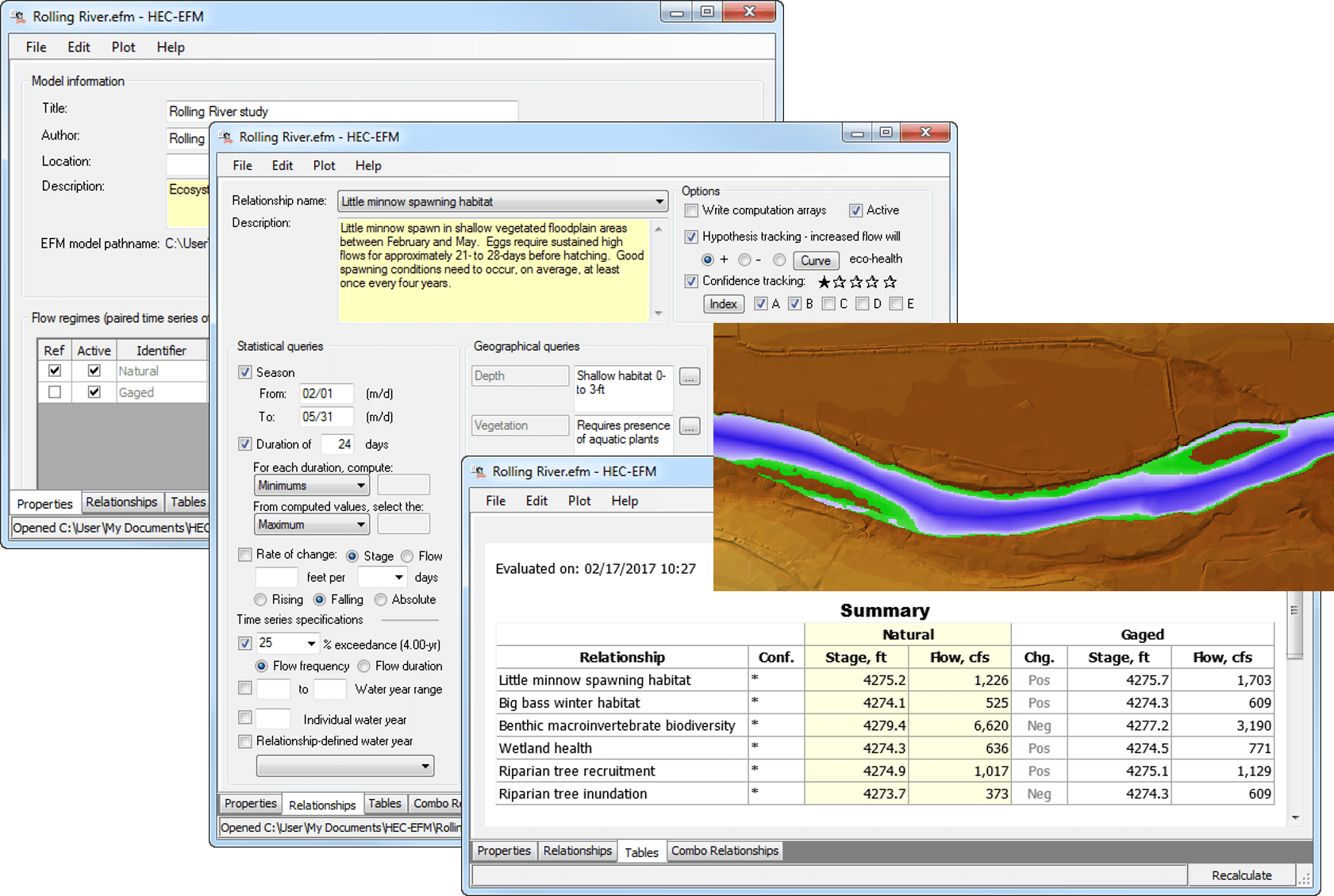
The Ecosystem Functions Model (HEC-EFM) is designed to help study teams determine ecosystem responses to changes in the flow regime of a river or connected wetland. HEC-EFM analyses involve: 1) statistical
analyses of relationships between hydrology and ecology, 2) hydraulic modeling, and 3) use of Geographic Information Systems (GIS) to display results and other relevant spatial data. Through this process, study
teams will be able to visualize and define existing ecologic conditions, highlight promising restoration sites, and assess and rank alternatives according to predicted changes in different aspects of the ecosystem.
HEC-EFM has many strengths, most notably 1) the software is capable of testing ecological change for any number of relationships and flow regimes, 2) HEC-EFM links ecology with established hydrologic, hydraulic,
and GIS tools, and, 3) the software can be applied quickly, inexpensively, and can incorporate expert knowledge. HEC-EFM is also a generic software tool, applicable to a wide range of riverine and wetland
ecosystems.
HEC-EFM has been certified for use in USACE Planning Studies by USACE Headquarters (HQ memo) as recommended by the National Ecosystem
Planning Center of Expertise (PCX memo) as being sound in contemporary theory, computationally correct, and compliant with USACE policy.